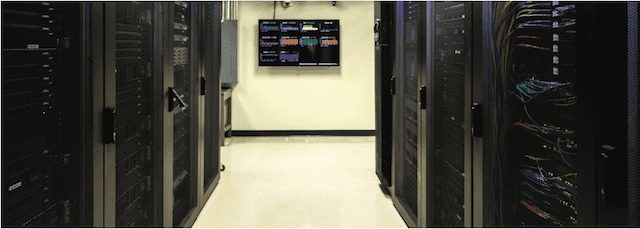As an adjunct professor for the Taylor University Film and Media Production program, Josh Taylor helps future filmmakers get started in their craft. He also does double duty as chief media engineer, where he’s responsible for the department’s storage infrastructure.
At Taylor University, students learn narrative filmmaking, documentary filmmaking, video production for clients, and multi-camera studio production. Josh ensures students have the most current hardware and software they need to prepare for a career in a fast- paced, ever evolving industry. At the heart of the department’s technological workflow is OWC’s Jupiter centralized storage solution, housing the work that the program’s students spend their semester writing, directing, filming and editing.
‘Technology Changes Over Night’
During his 11 years at Taylor University, Josh Taylor has witnessed a technological evolution. In 2010, the decision was made to move completely away from traditional tape-based operations in favor of an all solid-state workflow. Keeping current with the pace of the industry opened new doors for the students and their projects.

As image resolutions continue to increase, along with storage and collaborative demands, the need for a centralized workstation became paramount. Investigating his options, Josh Taylor landed on a familiar technology partner. The same company he’d relied on for so many of his hardware needs for more than a decade.
“I had always been pleased with the support OWC provided,” Josh said. “We checked with other vendors, but with Jupiter, everything is supported by one company. That fact and the price point really drove our decision.”
While great storytelling will always be top priority, technology changes overnight, and the program has to keep up to deliver the best outcome for students. Having Jupiter Callisto in place gives students a solution built to perform over the long haul, so they can stay focused on their craft.
Big Storage On Campus
Inspiration can strike at any moment. So, it’s important that students have access to their work from anywhere on campus.
To accommodate this modern mobile creative workflow, Taylor’s campus is outfitted with a 10Gbps Ethernet ring allowing students to connect their personal computers remotely to Jupiter Callisto, physically located in the campus server farm. The department also features seven edit bays, three audio suites and multiple ingest stations in Rupp Communication Arts Center connected to Jupiter. After ingesting their work, they access it from anywhere on campus.
In addition to this workflow flexibility, Jupiter brings robust performance to meet the demands of a classroom full of users. Students can send files up to 50GB to and from Callisto without being suffering long, productivity- killing wait times. According to Josh, the average wait time for a 5GB file is only 60 to 90 seconds.
“Between our 21 seat iMac lab, our editing bay, audio suites, and all their laptops and personal machines, we’ve never had a speed issue,” Josh said. “I’m teaching class with 17 to 20 people in the lab at one time, and we all connect to it and pull files down from it or drop something… we’ve never had any hiccups or slow speeds.”

Future-Proofing for Future Filmmakers
In addition to flexibility and performance, another of Jupiter’s draws for Taylor is its expandability. Having already expanded its initial Callisto unit with a Jupiter Kore Mini-SAS connected storage system; the summer of 2016 saw the need for further expansion. Having experienced 100% uptime with Jupiter, it was a simple decision to add an additional Callisto system.
“We bought Callisto as a test run the first time, and it met our needs so well that we later added [Kore] to expand on that,” Taylor said. “It was really seamless — just take it out of the box throw it in the rack and connect it to Callisto and turn power on. And it’s right there in the interface, set up your tool and you’re done. Out of all my hardware, Jupiter is the one thing I don’t have to think about. It just runs.”
This stability and expandability has enabled further collaboration from students.
“Someone might be in a lab working on graphics, and another student might be finishing up a rough cut and timeline in edit suite. Another might be working on credits and they’ll all be connected to Jupiter doing so… There are even times when they realize a project would take three days to render. But with the project on Jupiter, they can go around and find open machines in the building, connecting them, and basically make a render farm and take a three-day render down to about four hours.”
In the end, the goal for the Film and Media Production program is to expose students to real-life filmmaking techniques and providing the right tools to allow them to do their best work.
“Technology changes on a regular basis, so we want [our students] to really understand how to tell a great story,” Taylor said.
Find out more about OWC Jupiter and how it can help your workflow at: eshop.macsales.com/shop/storage/Enterprise/jupiter/








“In 2010, the decision was made to move completely away from traditional tape-based operations.”
Sorry, I thought that said 2010, must be some kind of mistake!